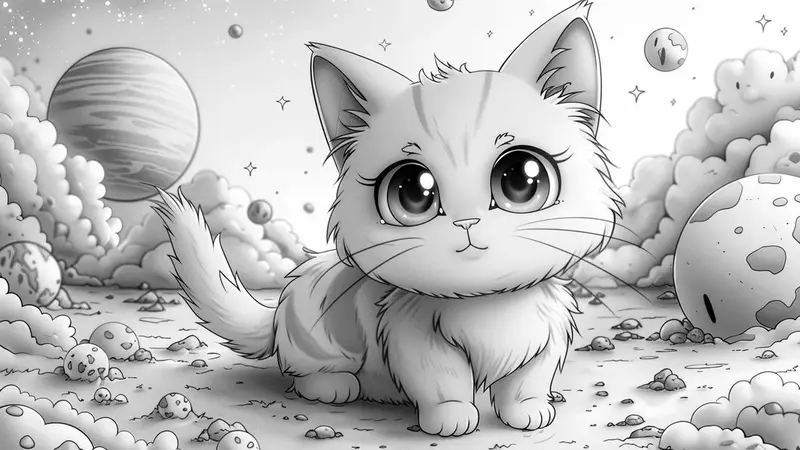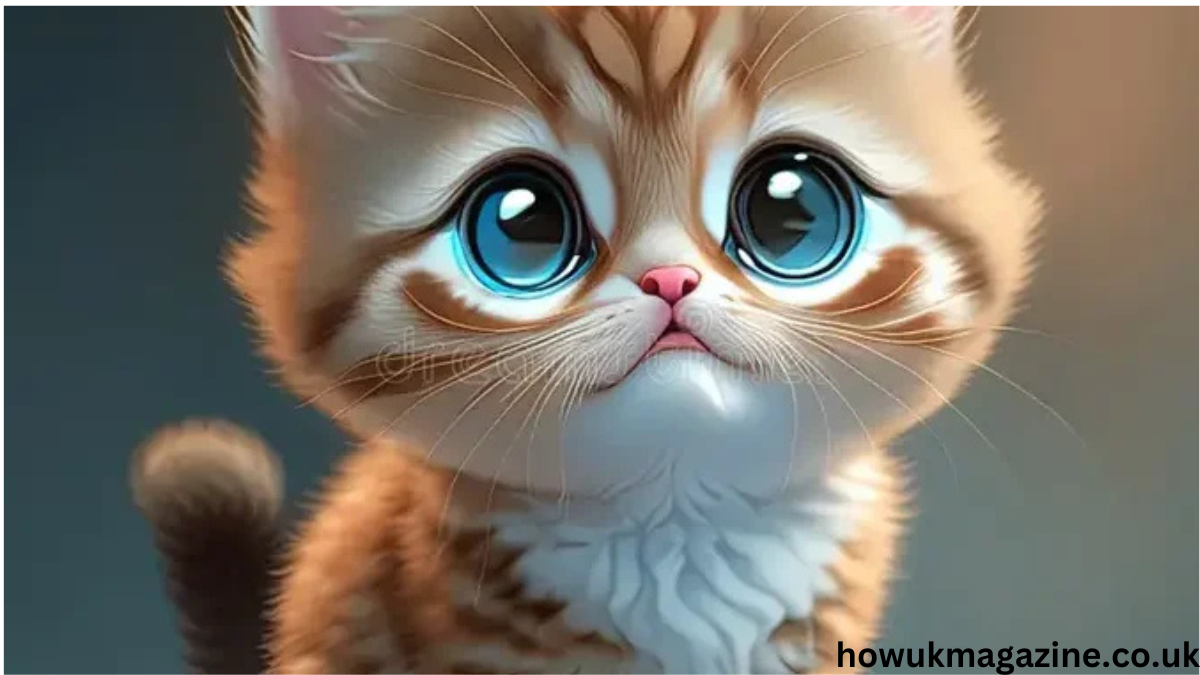Introduction
cute:i1cdycptg50= drawings have captivated audiences worldwide, transcending age, culture, and language. But what exactly makes a drawing “cute”? The word “cute” encompasses a certain aesthetic that is often simplified, rounded, and small, evoking a warm, comforting, and childlike feeling. Cute drawings are characterized by their approachable charm, often incorporating whimsical and playful elements that bring a smile to anyone who views them.
The demand for cute art has grown, especially in digital spaces. From social media to merchandise, cute drawings play a major role in visual culture. For artists, creating these drawings offers an opportunity to connect with a broad audience, and mastering the style requires a blend of creativity, technique, and an understanding of emotional impact.
The Essentials of Creating cute:i1cdycptg50= drawings
Simplification and Exaggeration of Features
When it comes to creating cute drawings, simplicity is key. Reducing complex subjects into their most basic shapes while exaggerating certain features makes them more approachable and charming. For example, large eyes, small noses, and rounded edges give characters a sense of innocence and vulnerability. These exaggerated features mimic the proportions of young animals or children, which our brains are hardwired to find endearing.
Mastering this style requires an understanding of anatomy and proportion, as even slight variations can completely change the impact. Many artists start with simple sketches to play around with proportions and shapes before committing to a final design. The practice of trial and error helps refine the character and find a balance between simplicity and expression.
Use of Soft Lines and Curves

Unlike realistic or dynamic drawings that often employ sharp angles, cute:i1cdycptg50= drawings benefit from soft lines and curves. Rounded shapes give characters a friendly look, creating a sense of warmth and gentleness. When sketching, artists often use light, flowing strokes to keep the image open and airy. This technique can be applied to all aspects of the character, from their face and body to the accessories and background elements.
Curved lines also create a sense of movement and softness. In digital art, using a tablet with pressure sensitivity can enhance this effect, as artists can control the thickness of each stroke to add depth and softness. This approach can be especially useful in creating backgrounds that complement the character without stealing focus.
Choosing the Right Colors
Color plays a huge role in enhancing the cuteness factor of a drawing. Soft, pastel colors are often preferred in cute:i1cdycptg50= drawings because they evoke a gentle, calming effect. Light pinks, baby blues, and soft yellows are commonly used for a dreamy, playful look. Additionally, subtle shading with pastel colors adds dimension without being too bold, keeping the overall appearance light and airy.
Color theory also comes into play here. Cool colors can add a serene quality, while warm colors make the drawing feel cozy and friendly. Choosing the right palette can significantly impact the mood of the artwork, and experimenting with color can help artists discover combinations that make their characters even more adorable.
Techniques to Make Drawings Extra cute:i1cdycptg50= drawings
Facial expressions are the heart of cute:i1cdycptg50= drawings. A slight change in the curve of the mouth or the size of the eyes can convey a range of emotions, from happiness and excitement to shyness or even a cute pout. Artists often focus on the “puppy-dog eyes” effect—large, slightly moist-looking eyes that can make any character look irresistibly sweet.
For more impact, some artists experiment with blush lines or subtle shading under the eyes. This soft touch gives the character an innocent, vulnerable look, almost like they’re about to cry. Experimenting with different expressions and testing how they influence the character’s vibe is a great exercise for any artist looking to master cute:i1cdycptg50= drawings art.
Incorporating Tiny Details
Tiny details can bring a lot of charm to a drawing. Elements like freckles, tiny stars in the eyes, or small hair strands sticking out can add layers of personality. Artists often add these details after completing the main sketch, using them to enhance the character without overwhelming the design. Less is often more when it comes to details in cute:i1cdycptg50= drawings, as overcrowding can detract from the simplicity.
Another popular addition is the “chibi” style, which reduces the character to a smaller, more childlike version with exaggerated expressions. Chibi-style drawings are known for their emphasis on personality over realistic proportions, and adding elements like tiny props or oversized clothing can boost the character’s charm even further.
Embracing Kawaii Culture Influences
The Japanese concept of “kawaii,” meaning “cute:i1cdycptg50= drawings” or “adorable,” has greatly influenced the world of cute art. Kawaii style involves extremely simplified characters with oversized heads, tiny bodies, and minimal detail. This aesthetic is widely popular in merchandise, fashion, and character design, with its influence reaching artists around the globe.
Adopting elements from kawaii culture, such as pastel color palettes, simple designs, and large expressive eyes, can give drawings a classic “cute:i1cdycptg50= drawings” look. Additionally, kawaii culture emphasizes positive emotions and comfort, making it an excellent foundation for artists looking to create lighthearted, comforting art.
Tools and Mediums for cute:i1cdycptg50= drawings
Digital Drawing Tools
Digital art has become a preferred medium for cute:i1cdycptg50= drawings due to its flexibility and ease of sharing. With digital tools like Procreate, Adobe Photoshop, and Clip Studio Paint, artists can quickly experiment with shapes, colors, and textures without committing to one design. Layers, in particular, allow for a non-destructive workflow, letting artists add or remove elements without affecting the rest of the drawing.
Digital brushes also play an important role. Soft, textured brushes can simulate traditional media like watercolors or markers, which are often used in cute:i1cdycptg50= drawings art. Additionally, many digital artists create custom brushes tailored to cute drawings, including brushes for soft lines, pastel shading, or even sparkles.
Traditional Tools: Pencils, Markers, and Watercolors
For artists who prefer traditional methods, pencils, markers, and watercolors are excellent choices for creating cute:i1cdycptg50= drawings. Colored pencils and markers allow for precise control over details, while watercolors lend a soft, dreamy look perfect for cute themes. Artists can also blend colors seamlessly with watercolors, making it easy to create pastel shades and gentle gradients that add to the cute factor.
Using traditional media requires a bit more patience, especially when adding layers or small details. However, the tangible aspect of working on paper often brings a unique charm to traditional art, and many viewers appreciate the subtle textures and nuances that come with hand-drawn work.
Exploring Mixed Media
Mixed media art allows artists to combine traditional and digital tools to create unique effects. For example, artists may start with a pencil sketch, then scan it and add colors digitally. This approach retains the organic look of a hand-drawn sketch while adding the benefits of digital coloring and effects. Mixed media is popular in character design and cute:i1cdycptg50= drawings art because it combines the best of both worlds.
In addition, mixed media can include incorporating physical materials, such as stickers or glitter, into drawings. This approach can make the artwork stand out, especially in contexts where artists display or sell their work in physical form.
Creating Backgrounds That Enhance the Cuteness
Simple and Soft Backgrounds
In cute:i1cdycptg50= drawings, backgrounds are usually kept simple to keep the focus on the character. Soft gradients, pastel colors, or basic shapes can add visual interest without distracting from the main subject. Simple backgrounds also add a sense of tranquility, making the drawing feel calm and uncluttered.
Some artists prefer adding small, cute:i1cdycptg50= drawings icons in the background, like hearts, stars, or bubbles. These subtle additions can complement the character’s personality and add a touch of whimsy to the drawing.
Using Props to Tell a Story
Including props or small background elements can tell a story about the character. For instance, placing a character in a tiny coffee shop, a cozy bedroom, or a lush garden can give context to their personality. This approach can make the drawing more relatable, as viewers can connect with familiar scenarios and imagine the character in their world.
The props themselves can be simplified to match the cute:i1cdycptg50= drawings aesthetic—tiny furniture, oversized books, or mini plants, for example. By keeping the props just as rounded and soft as the character, artists create a cohesive look that enhances the overall appeal.
Playing with Scale and Perspective
cute:i1cdycptg50= drawings art often embraces playful perspectives, such as making objects look oversized in relation to the character. This technique can make the characters appear smaller and more endearing, as though they’re living in a big, whimsical world. Using this scale can be particularly effective in creating a sense of wonder and innocence.
Artists also play with perspective by creating scenes from a low angle, making the character appear larger and more important. This technique works well for empowering characters while maintaining their cuteness, adding a subtle storytelling element to the art.
Conclusion
The art of creating cute:i1cdycptg50= drawings combines technical skill with an understanding of what evokes warmth and joy in people. These drawings go beyond simple illustrations; they are a form of emotional expression that resonates with audiences of all ages. Whether it’s digital artwork on a social media post, a hand-drawn sticker, or a character design, cute art has the unique ability to make people feel happy and connected.
